History of Jesuits in New England
Settlements and Early Missions
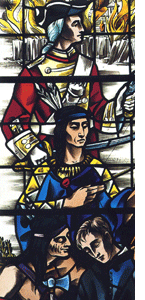 The presence of the Jesuits in New England dates from the summer and fall of 1611 when Father Pierre Biard explored the rivers of Maine and offered the first recorded Mass at the mouth of the Kennebec River. Returning with three other Jesuits in 1613, he founded Saint Saviour Mission at Fernald Point in Southwest Harbor. Tragically, the mission was wiped out by English colonists from Virginia. Jesuit Brother Gilbert du Thet was killed in the defense of the mission and buried there.
The presence of the Jesuits in New England dates from the summer and fall of 1611 when Father Pierre Biard explored the rivers of Maine and offered the first recorded Mass at the mouth of the Kennebec River. Returning with three other Jesuits in 1613, he founded Saint Saviour Mission at Fernald Point in Southwest Harbor. Tragically, the mission was wiped out by English colonists from Virginia. Jesuit Brother Gilbert du Thet was killed in the defense of the mission and buried there.
Colonial Wars
Nevertheless, the Jesuits returned to establish missions on the major rivers of Maine. Father Gabriel Drouillettes founded a mission in the early seventeenth century in Augusta. But Father Sebastian Rasle, who defended the land rights of Native Americans during the struggle between England and France for the control of North America, became the most famous Jesuit in the colonial history of New England. In defending the mission, he was brutally killed by the English, on August 23, 1724, in Norridgewock.
Papal Suppression of the Jesuits and Restoration
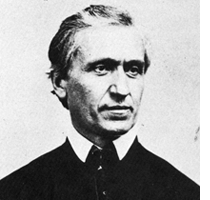 With the worldwide suppression of the Society of Jesus in 1773, the activities of the Jesuits in North America ended temporarily. After the Order was restored in 1814, Jesuits like Benedict Joseph Fenwick, Virgil Barber, and John Bapst carried on the work of the Society of Jesus in New England with vigor and dedication. Fenwick, as Bishop of Boston, founded the College of the Holy Cross in 1843. Barber, a convert to Catholicism, became a missionary among immigrants and Native Americans in Maine, New Hampshire, and Vermont. Bapst, first president of Boston College in 1863, had been tarred and feathered and run out of Ellsworth, Maine two years earlier for trying to found a Catholic school. By the twentieth century, the Jesuits were strongly established in New England.
With the worldwide suppression of the Society of Jesus in 1773, the activities of the Jesuits in North America ended temporarily. After the Order was restored in 1814, Jesuits like Benedict Joseph Fenwick, Virgil Barber, and John Bapst carried on the work of the Society of Jesus in New England with vigor and dedication. Fenwick, as Bishop of Boston, founded the College of the Holy Cross in 1843. Barber, a convert to Catholicism, became a missionary among immigrants and Native Americans in Maine, New Hampshire, and Vermont. Bapst, first president of Boston College in 1863, had been tarred and feathered and run out of Ellsworth, Maine two years earlier for trying to found a Catholic school. By the twentieth century, the Jesuits were strongly established in New England.
A Separate Province
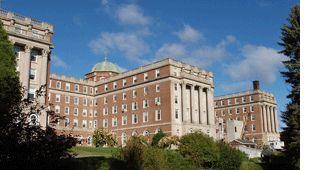 New England became a separate province in 1926 and consisted of 492 Jesuits. It continued to grow until 1964, during the Second Vatican Council, when it peaked at 1,129 members, among them 755 priests, 63 brothers, and 311 Jesuits in formation. At that time there werethree institutions of higher education, two seminaries, five secondary schools, six retreat houses, three parishes, and numerous specialized ministries. The province was also responsible for two foreign missions territories, which included another university, three more high schools and numerous parishes.
New England became a separate province in 1926 and consisted of 492 Jesuits. It continued to grow until 1964, during the Second Vatican Council, when it peaked at 1,129 members, among them 755 priests, 63 brothers, and 311 Jesuits in formation. At that time there werethree institutions of higher education, two seminaries, five secondary schools, six retreat houses, three parishes, and numerous specialized ministries. The province was also responsible for two foreign missions territories, which included another university, three more high schools and numerous parishes.
A Legacy of Leaders
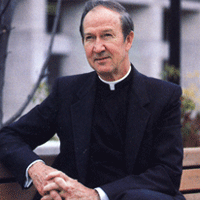 The Jesuits of New England have left a rich legacy that echoes in the names of persons like John Louis Bonn, a noted author; Robert F. Drinan, the first priest elected to the United States Congress; John C. Ford, a moralist with an international reputation; Daniel Linehan, a seismologist whose expertise helped to locate the bones of St. Peter and the geographical north pole; Joseph T. O'Callahan, the first military chaplain to win the Congressional Medal of Honor; and Michael P. Walsh, whose leadership in higher education won the respect of those outside his own church. Less conspicuous were Jesuits like Henry M. Brock, an MIT graduate in 1900 who quietly taught the sciences to generations of Jesuits at our seminary in Weston, MA, and Thomas J. Meehan, whose reading of works on history and theology, enriched his life as a Jesuit brother.
The Jesuits of New England have left a rich legacy that echoes in the names of persons like John Louis Bonn, a noted author; Robert F. Drinan, the first priest elected to the United States Congress; John C. Ford, a moralist with an international reputation; Daniel Linehan, a seismologist whose expertise helped to locate the bones of St. Peter and the geographical north pole; Joseph T. O'Callahan, the first military chaplain to win the Congressional Medal of Honor; and Michael P. Walsh, whose leadership in higher education won the respect of those outside his own church. Less conspicuous were Jesuits like Henry M. Brock, an MIT graduate in 1900 who quietly taught the sciences to generations of Jesuits at our seminary in Weston, MA, and Thomas J. Meehan, whose reading of works on history and theology, enriched his life as a Jesuit brother.
Supporters and Friends
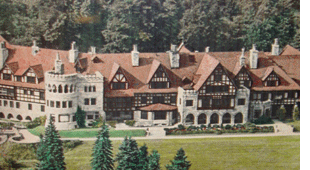 During its first 75 years, the New England Province was fortunate to have a number of very generous benefactors. Foremost among them was Richard Cardinal Cushing, Archbishop of Boston (1944-1970), who vitally supported our works in New England and overseas. Cushing contributed greatly toward the building of a new house of study (novitiate and juniorate) in Lenox, MA after the Shadowbrook building was destroyed in 1956 by a tragic fire that claimed the lives of four Jesuits.
During its first 75 years, the New England Province was fortunate to have a number of very generous benefactors. Foremost among them was Richard Cardinal Cushing, Archbishop of Boston (1944-1970), who vitally supported our works in New England and overseas. Cushing contributed greatly toward the building of a new house of study (novitiate and juniorate) in Lenox, MA after the Shadowbrook building was destroyed in 1956 by a tragic fire that claimed the lives of four Jesuits.
The province has published The Shadowbrook Fire, by F.X. Shea. Download the pdf or order on Amazon.
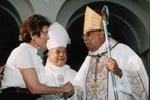 Today, the New England Province reflects greater diversity of ethnic backgrounds than the dominant Irish strain that characterized its first 50 or 60 years. Although its traditional work continues to be anchored in education, it has entered into a more diverse collaboration with diocesan bishops throughout the region and outside New England.
Today, the New England Province reflects greater diversity of ethnic backgrounds than the dominant Irish strain that characterized its first 50 or 60 years. Although its traditional work continues to be anchored in education, it has entered into a more diverse collaboration with diocesan bishops throughout the region and outside New England.
Publications about Province History
Fr. Vincent A. Lapomarda, SJ, has compiled “A Chronology relating to the 400th anniversary (1611-2011) of the arrival of the Jesuits in New England”. Click here to download a pdf.
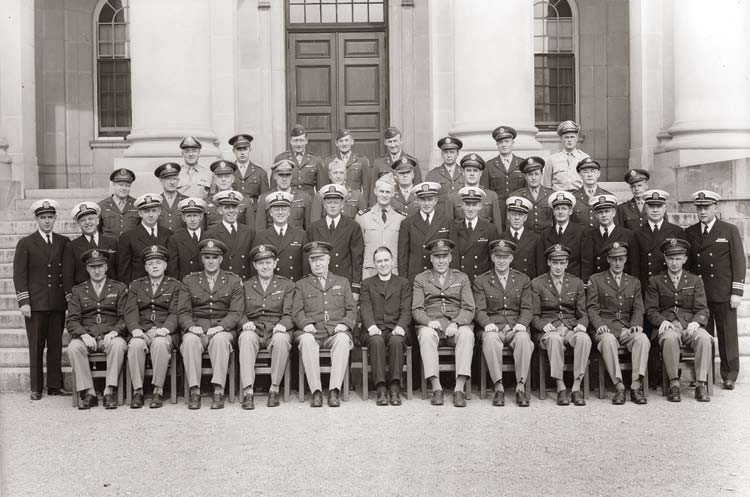 Fr. Joseph Duffy, SJ, has edited a new e-book, “To Love and Serve: World War II Chaplains of the New England Province of Jesuits.” The book contains a rich history of Jesuits who served as chaplains in the military - beginning in 1550 with Rev. James Laynez, SJ, who succeeded St. Ignatius as General of the Society of Jesus and was the first Jesuit to serve as military chaplain. Dedicated to graduates of Jesuit sponsored secondary and higher education institutions in New England who died serving their country, the book includes a chapter of personal accounts of their experiences entitled “In Their Own Words”. The book is also available to view here.
Fr. Joseph Duffy, SJ, has edited a new e-book, “To Love and Serve: World War II Chaplains of the New England Province of Jesuits.” The book contains a rich history of Jesuits who served as chaplains in the military - beginning in 1550 with Rev. James Laynez, SJ, who succeeded St. Ignatius as General of the Society of Jesus and was the first Jesuit to serve as military chaplain. Dedicated to graduates of Jesuit sponsored secondary and higher education institutions in New England who died serving their country, the book includes a chapter of personal accounts of their experiences entitled “In Their Own Words”. The book is also available to view here.
For more information about the history of the New England Province, please contact our Province Archives at the College of the Holy Cross, Worcester, MA